If you are interested I may be able to help. If you let me have the book I would happily include details on my web site, where it may be seen by members of the Proctor family researching their ancestors. I could also take it to HALS to see if it is of interest to them, and if not contact The Lordship at Benington. If appropriate I could scan it and put copies on a CD so that anyone interested could have a digital copy.
Arthur is sending the book and I will report on its contents when it arrives.
August, 2007
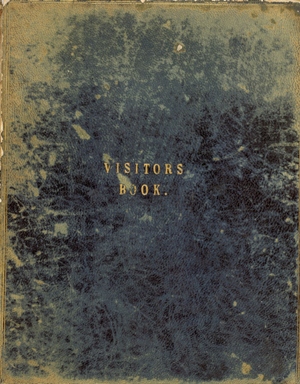 Preliminary Report
Preliminary Report
General Description of Book
A leather covered hardback visitors book printed with about 100 double pages, and 11 entries per page, about three-quarters full. Cover very worn, spine missing, binding loose but all pages firmly in place.
The "title page" has the inscription:
|
Mrs G V Proctor |
The first entry is dated October 21, 1886, and ends on June 12, 1933.
The following changes of address are noted:
| Eastwood Vicarage | 5 Dec. 1899 |
| West Ridge, Sandhurst | Sept 26 1903 |
| The Highlands, Caversham | Oct 17, 1913 |
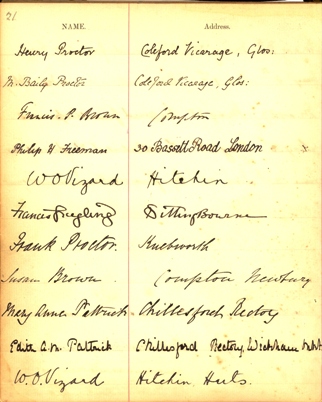 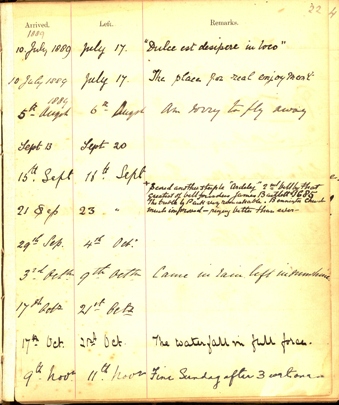 |
The above represents a typical page
Family Tree
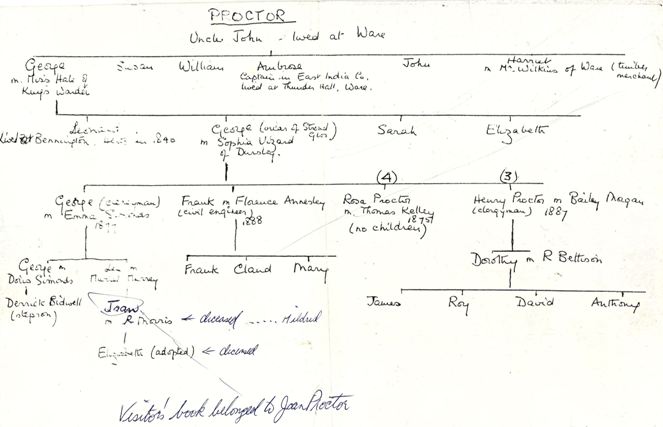
A family tree which came with the Visitors Book
Photograph
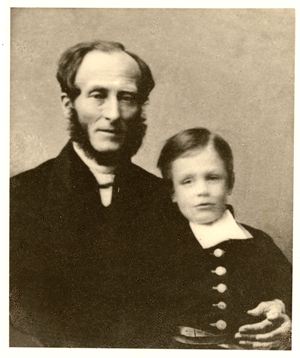 |
My Grandfather & Father George Proctor Frank Proctor |
Brief Extracts from Principal Sources
Cussans
... on 14th May 1826, sold it to the late George Proctor, Esquire, on whose death, in 1840, it came to his son, Leonard Proctor, Esquire, the present owner. ...
In the tower is a peal of eight bells (in the key of F#). which are considered to be the best of their weight in the County of Hertford, while the performances on them, as recorded on tablets in the belfry, are certainly without parallel in campanologian annuals. This result is attributable to the fact that the lord of the manor is himself a most enthusiastic and skilful bell-ringer, and there are probably but few belfries in England in which the name of Leonard Proctor is not known and respected.
Victoria County History
In 1826 the last John Chesshyre sold Benington to George Proctor, who was succeeded by his son Leonard in 1840. Leonard was still holding it in 1894, but before 1899 was succeeded by Arthur Procter Pickering, who died in 1902. In 1905 Mr. Arthur F. Bott, the present lord of the manor, acquired it by purchase from Mr. Pickering's successor. From: 'Parishes: Benington', A History of the County of Hertford: volume 3 (1912), pp. 73-7.
Benington Lordship web page
The red brick manor house was built after a fire in about 1700. By 1832 George Proctor was in residence. He built the magnificent flint gatehouse including the curtain wall and summer house. It is generally believed that this romantic folly is the work of James Pulham who was famous for work using his "Pulamite Stone". This secret mixture was a sort of cement that could be moulded to replicate stonework.
Additional Information
Census Returns - Benington Lordship
Summary: Leonard Proctor never married and was in residence in all censuses from 1841 to 1891. His unmarried uncle, William Proctor, was with him between 1841 and 1871. His nephew, George Vizard Proctor. and family, was with him in 1881 and 1891.